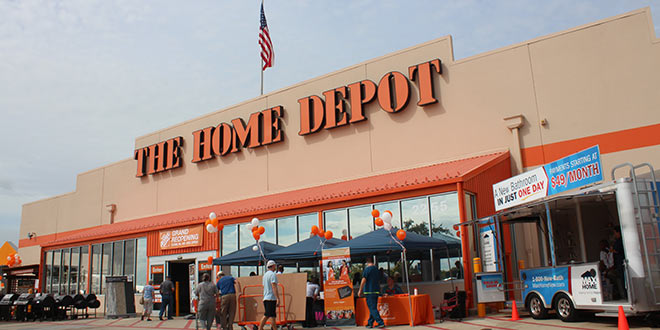Home Depot is about 30 years younger than Lowe’s, but is now by far the home improvement industry leader in overall sales.
Speaking to Seth Basham, managing director of equity research at Wedbush Securities, Business Insider outlines key differences between the two largest big-box home improvement rivals.
Home Depot earns more store sales than Lowe’s, but Lowe’s lower sales and operational inefficiencies are in some part “a function of how the company grew up,” Basham says in the article.
Home Depot’s total sales were $100.9 billion in fiscal 2017 and Lowe’s were $68.6 billion, according to company annual reports.
Lowe’s launched in 1946 and Home Depot began operating in 1978, but Home Depot chose to grow to more locations faster than its counterpart, gaining an advantage, Basham says.
“Lowe’s growth streak in terms of opening new stores happened after Home Depot’s,” he says in the article.
As a result, Lowe’s now often occupies “secondary real-estate locations,” which, in many instances, don’t receive as much customer traffic as Home Depot stores, Basham says.
One of the major advantages Home Depot has over Lowe’s is its share of business from home improvement professionals, according to Basham. Sales to professionals account for about 45 percent of Home Depot’s overall sales, compared to just 20 to 25 percent of Lowe’s sales, he says.
One of the reasons Home Depot is popular with professionals is because the company focuses on providing brand name products, Basham says.
“They want to use products they know they can trust, and Home Depot has better brands,” he says.
However, Lowe’s has projects in the pipeline that could create new opportunities for growth, according to Basham.
For example, Lowe’s focus on courting business from professionals is a growth driver, he says.
Another positive for Lowe’s future is that its president and CEO, Marvin Ellison—who took the top executive role in July—is a “straight shooter” who has a vision for the company, according to Basham.
“He’s divesting non-core businesses and focusing on the U.S. business and the core stores,” Basham says.
 Hardware Retailing The Industry's Source for Insights and Information
Hardware Retailing The Industry's Source for Insights and Information







